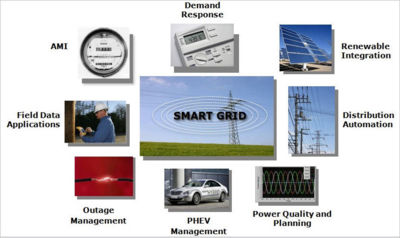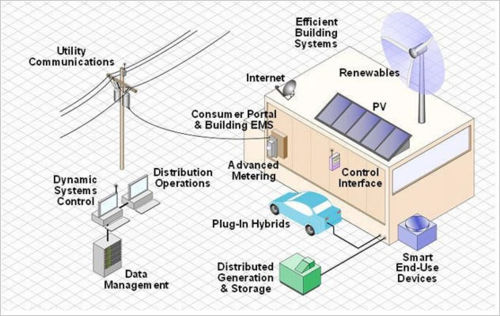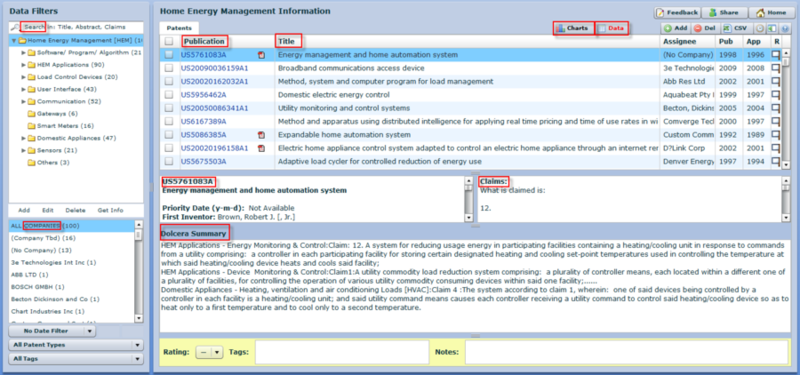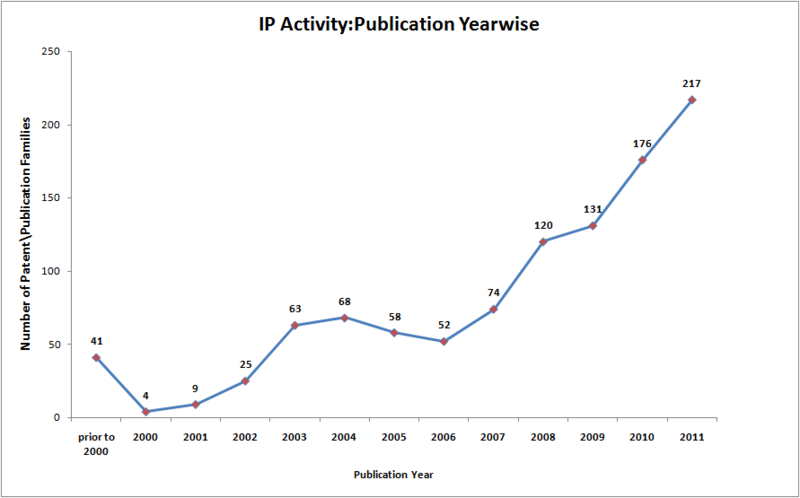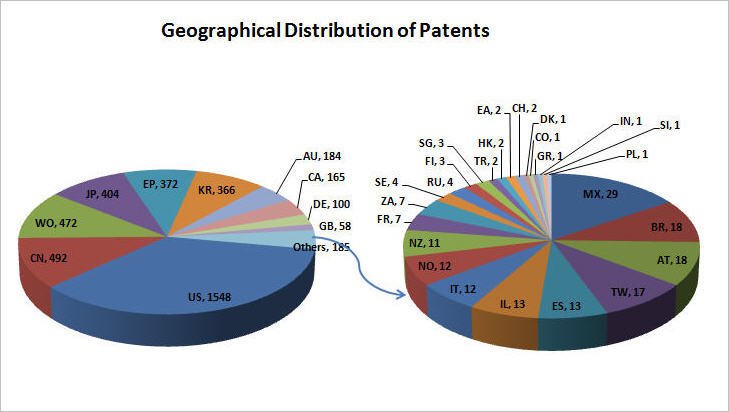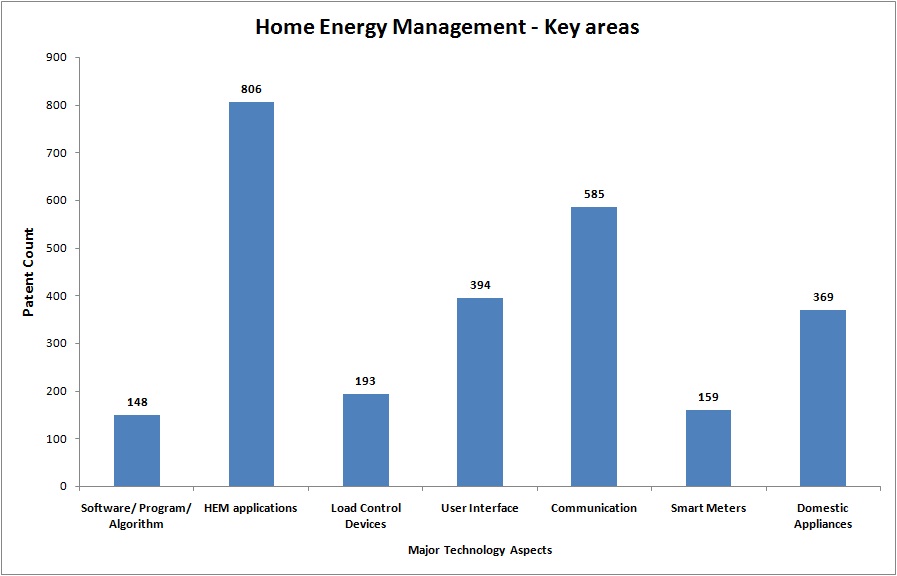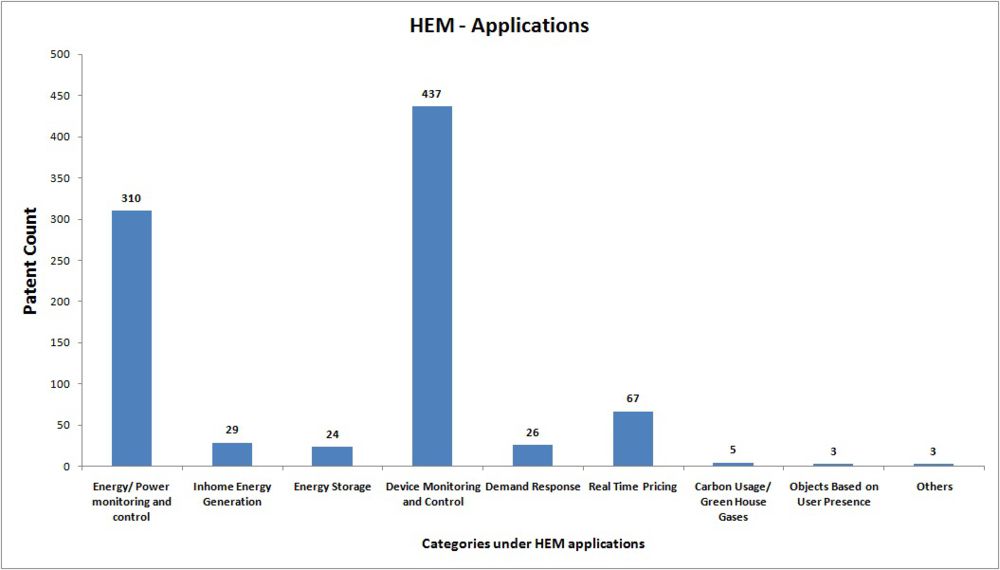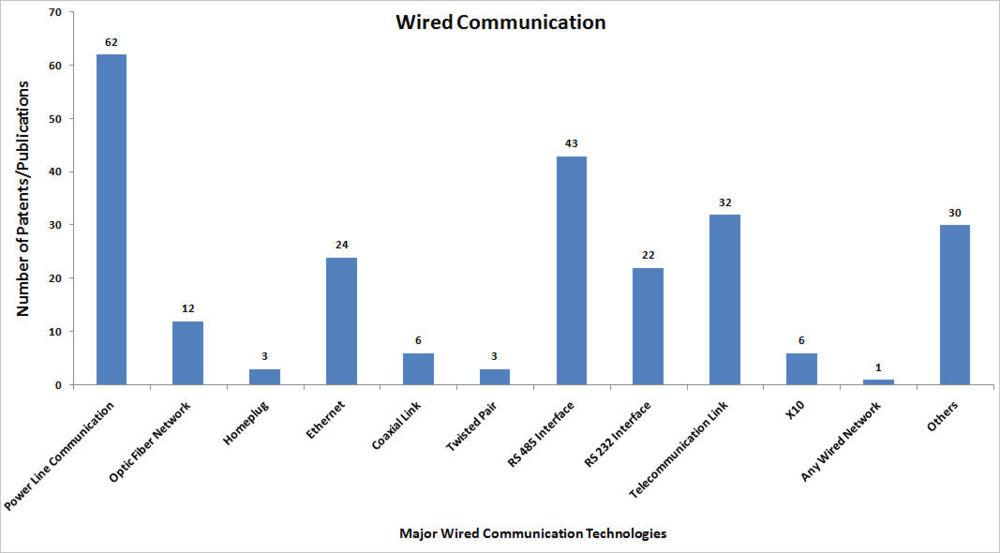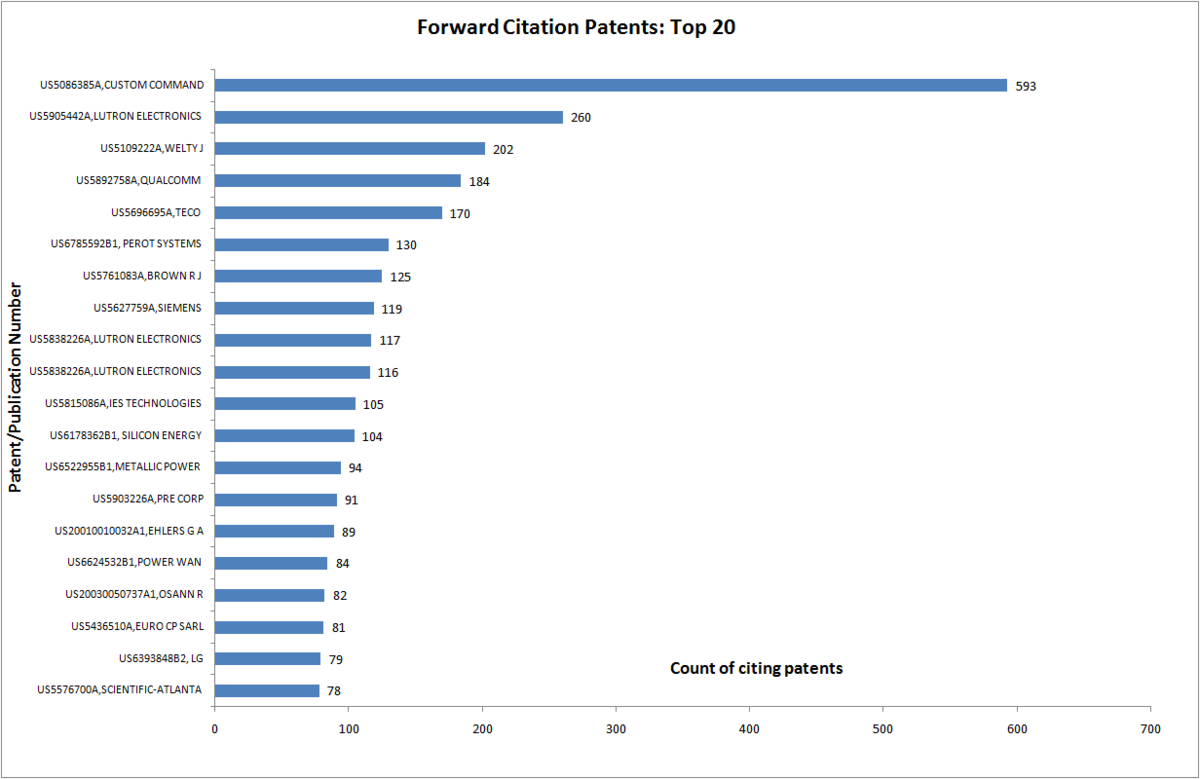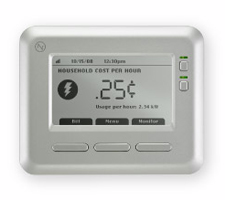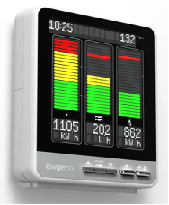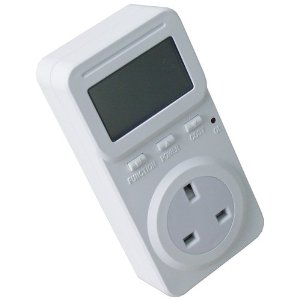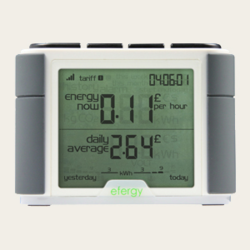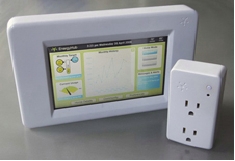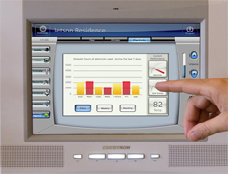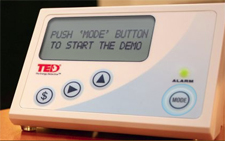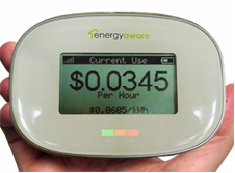Smart Grids
Contents
- 1 Objective
- 2 Smart Grid
- 3 Search Stategy
- 4 Analysis
- 5 Geographical Distribution
- 6 Key areas -Home Energy Management
- 7 Home Energy Management(HEM)- Applications
- 8 Top Assignees - Energy Monitoring and control Priority year wise
- 9 Top assignee - Device Monitoring and control Priority year wise
- 10 Communications
- 11 Graphical User Interface
- 12 List of HEM Devices
Objective
The report mainly focus on the key issues of home energy management in Smart Grid. Monitoring of the whole house energy consumption as well as energy used by individual appliances and circuits within the homes. Effective energy management at home is key and an integral part of the future Smart Grid.An innovative energy management system for home (Home Energy Management) which pursues the increase of the efficiency of the energy used and the reduction of the global energy demand of the homes, but without penalizing the comfort levels of the users.
Smart Grid
Smart Grid is a next-generation electric power system represented by convergence of modernized electric power technology and information communication technology, and management. The smart grid movement combines an amalgam of new digital and mechanical technologies aimed at improving the efficiency of our electrical infrastructure. At the consumer level, home energy monitors that inform customers about electric use.
The smart grid takes the existing electricity delivery system and makes it “smart”
by linking and applying seamless communications systems that can
- Gather and store data and convert the data to intelligence.
- Communicate intelligence omnidirectionally among components in the “smart” electricity system and
- Allow automated control that is responsive to that intelligence.
Five technologies that will drive the smart grid are
- Integrated communications
- Sensing & measurement technologies
- Advanced components (superconductivity, storage, power electronics & diagnostics)
- Advanced control methods
- Improved interfaces and decision support
Home Energy Management systems (HEM)
Home Energy Management systems are usually called smart grid systems. This allows for an open communication between the utility company and the consumer. The energy management system optimizes the energy usage by informing the customer on a live basis of their corresponding consumption rates. The smart grid uses web based systems between a series of different networks. By having web based systems with open communication time of usage is emphasized. Utility companies have higher electric rates during peak periods, so the smart grid emphasizes off peak energy consumption.
- Mass deployment of smart meters by utilities is creating new business opportunities for product developers and utilities. As energy plays a larger role in the lives of consumers, a wide range of new products and services will be developed to enable the market. Home Energy Management is becoming the “killer app” for home automation.
- EMS (Energy Management System) employed for real-time electric power management and real-time power consumption prediction and AMI (Advanced Metering Infrastructure) for real-time metering of the power consumption are important in the Smart Grid.
Benefits of HEMS
Benefits for utilities
1. Public Policy: Reduce Carbon Emissions
- Driven by government carbon policies, utilities are looking at energy conservation rather than adding generation, as well as shifting generation from fossil fuels to renewables.
- Various studies have shown a reduction in home energy use of 4-15% through use of home energy display.
- HEM provides a means to integrate the residential consumer into the utility’s communication framework for energy management.
2. Increase Grid Reliability: Demand Response Load Control
- Demand Response provides utilities a mechanism to shed load based on real-time conditions. DR using 1-way paging networks is being replaced with new 2-way Advanced Meter Infrastructure, along with use of home broadband connections.
- HEM provide a mechanism for utilities to use AMI and residential broadband networks to implement a more measurable and verifiable DR solution.
3. Implement Time-of- Use: Peak Time Rebate Programs
- Most utilities charge their consumers a flat rate/KwH, in spite of them paying higher wholesale prices during peak consumption hours. This directly affects their bottom line as well as does nothing to help conservation during peak hours.
- HEM will provide mechanisms to automate load shifting based on price of energy, without adversely affecting customer satisfaction when TOU/CPP/CPR/PTR pricing is implemented by utilities.
4. Integrate EV, Storage and Micro Generation
- Utilities would like to assess the overall impact of EVs, Battery Storage and Micro Generation to generation, transmission and distribution, as well as consumer behavior.
- HEM will be the platform that integrates all components in the home to provide analytics and data mining opportunities.
5. Social Benefits
- Reducing the demand for fossil fuels.
- Generating jobs, in the manufacture and installation of insulation, and in the manufacture, installation and servicing of renewable and low carbon sources of energy.
Benefits for consumers
1. Demand Response: Savings Incentives
- Provides an easy-to-use application for utility-based pricing incentives to save energy and costs
- Offers the consumer flexibility to temporarily opt out of pricing programs
2. Time-of-Use and Critical Peak Pricing: Manage Energy Budgets
- Allows customers to set up general policies to automate energy consumption based on time of day
- Allows residential customers to manage their energy budgets effectively
- Identify Energy Spikes - If consumers knew that their leaving their 500W PC on all the time is costing them an additional $100/month, then they can manage its usage more effectively
3. Being Green: Reduce Carbon Footprint
- Allows consumers to monitor and automatically reduce their energy consumption
4. Integrate Components: Vehicles, Storage, and Micro generation
- Integrates all components in the home to provide complete energy visibility and control, including electric vehicles, storage, and micro generation
Home Energy Management (Service Oriented Architecture)
The SOA (Service Oriented Architecture)based on the logic on the home gateway which can integrate the EMD managed home appiances in to home network.The appliance functions and utility services are deployed under a common logic on the home gate way (Data collector).Embedded energy management device(EMD) provides the basic energy management functions for existing home appliances.
The smart home architecture is to
Monitoring & Operation System :
- The Monitoring & Operation System provides the adequate tools to interact with the home appliances (sensors and actuators) and its “context” (environmental conditions, utilities etc) Interaction with sensors and actuators will be based on wireless monitoring and control network.
- And also it Provides a device which can integrate the home appliances in to the home network.
Intelligent Control System :
- Provide a device which can integrate the home appliances in to the home network.
- Provide guidance for energy profiling.
Define energy profiles for home appliances with which energy states can be assigned to the appliances with out constant metering.
Multimodal User Interface :
- It will develop a friendly user interface that will allow interacting with the control system through the user interface.
- Record energy profiles for ordinary appliances.
- Switch off appliances which are in stand-by mode.
Search Stategy
Control Patents
Search Concept Table
Classification(US, IPC, ECLA, F-Term)
HEM Search Strategy
Analysis
Category Definitions
- Software/Program/Algorithms- The documents which claims a software or algorithm or program for the maintenance of home network or energy monitoring and control or communication establishment with the different devices connected to the network are put into this category
- Load Control Devices- Patents claiming different kinds of load controlling devices like smart sockets, smart switches , circuit breakers etc which control the operation of the home devices(turning on/off , reducing power etc) directly fall under this category
- Communication- Different kinds of wired or wireless communication methods used for setting up the home networks are categorized under this head.
- Smart Meters- This category contains the patents which claim meters that has the capability like allowing remote metering, keeping record of individual home equipment’s energy usage or other factors etc.
- Sensors- Documents claiming different type of sensors used in home device management are contained in this category; some of the sensors are occupancy sensors, current sensor, voltage sensor etc.
- HEM Application- Patents claiming various kinds of home applications are put under this section. This sections different HEM application like energy monitoring and control, device monitoring and control, in home power generation, real time pricing etc.
- User Interface – Documents claiming different user interfaces used for the operation of the home devices through the network by the user are grouped in this section
- Gateways- Patents claiming gateways which are used to connect the home devices to the network fall in this category.
- Domestic Appliances- The domestic systems controlled by the home network fall in this category. This category includes HVAC, Televisions, and Washing Machines etc.
- Others- This category contains patents which explains other miscellaneous home applications
Interactive taxonomy of Home Energy Management (HEM)
Dashboard
Technology wise Dashboard
| Dashboard - Home Energy management |
Analysis Sheet
Home energy management analysis sheet
- Microsoft Office 2007 is required to view the excel sheets.
IP Activity
- Priority Year Wise
- Graph shows that there was a considerable filing activity in years 2008-2010.
- Publication Year Wise
- Graph shows a monotonous increase of publications after year 2006.
IP Activity:Major Players - Priority Year Wise
- Panasonic, Toshiba and LG Electronics are the major players in Smart Grid- Home Energy Management Technology.
- Haier came into this domain in 2005.
Geographical Distribution
- Major market for the Smart Grid technology is the USA, followed by China
- Click here for country codes.
Key areas -Home Energy Management
The key area in Home energy management is the HEM application. Majority of patents are focuesd into this area followed by communication
Home Energy Management(HEM)- Applications
Under HEM applications the main focus is on the monitoring or controlling home appliances.
Top Assignees - Energy Monitoring and control Priority year wise
- Panasonic holds the most number of patents in the category of Device monitoring and Control.
- Each top assignee in this category holds patents in the area of Energy Monitoring and control .
Top assignee - Device Monitoring and control Priority year wise
- LG Electronics holds the most number of patents in the category of Device monitoring and Control.
- Each top assignee in this category holds patents in the are of Network Connectivity/ Communication.
Communications
The total number of patent in the Wired communication category is 244, and the number of patents on wireless communication is 308. This graph shows the distribution of patents in different wired communication techniques used in home energy networks. It can be seen that Power line communication is used most for establish the network.
This graph shows the distribution of patents in different wireless communication techniques used in home energy networks.
Graphical User Interface
Most of the patents use display as the preferred graphical interface as can be seen from the graph.
- Generic Display: The patents categorized under this category does not claims any particular display medium. These displays can be implemented in any capable display device.
- Any User Interface: In this category the patents talk about various forms of user interaction like instant message, pop up message, emails etc.
Forward citations of Top 20 patents
- As can be seen from the graph of top cited patents, Custom Command Systems holds the patent with the highest number of citations
Top Cited Patents
| Publication Number | Publication Year | Title | Assignee | Inventor | Citing patent count |
| US5086385A | 1992 | Expandable home automation system | CUSTOM COMMAND SYSTEMS | Launey, Reuel O. | 589 |
| US5905442A | 1999 | Method and apparatus for controlling and determining the status of electrical devices from remote locations | LUTRON ELECTRONICS CO | Mosebrook, Donald R. | 254 |
| US5109222A | 1992 | Remote control system for control of electrically operable equipment in people occupiable structures | STEPHEN WYSTRACH | Welty, John | 201 |
| US5892758A | 1999 | Concentrated subscriber wireless remote telemetry system | QUALCOMM INC | Argyroudis, Panayotis | 183 |
| US5696695A | 1997 | System for rate-related control of electrical loads | TECOM INC | Ehlers, Gregory A. | 166 |
| US6785592B1 | 2004 | System and method for energy management | PEROT SYSTEMS CORP | Smith, Edward M. | 128 |
| US5761083A | 1998 | Energy management and home automation system | None | Brown, Jr., Robert J. | 124 |
| US5848054A | 1998 | Repeater for transmission system for controlling and determining the status of electrical devices from remote locations | LUTRON ELECTRONICS CO | Mosebrook, Donald R. | 117 |
| US5838226A | 1998 | Communication protocol for transmission system for controlling and determining the status of electrical devices from remote locations | LUTRON ELECTRONICS CO | Houggy, David E. | 116 |
| US5627759A | 1997 | Electrical energy meters having real-time power quality measurement and reporting capability | PROCESS SYSTEMS | Bearden, Michael K. | 115 |
| US5815086A | 1998 | Automated appliance control system | IES TECH INC | Ivie, Lovell Brent | 104 |
| US6178362B1 | 2001 | Energy management system and method | SILICON ENERGY CORP | Woolard, John W. | 104 |
| US6522955B1 | 2003 | System and method for power management | METALLIC POWER INC | Colborn, Jeffrey A. | 93 |
| US5903226A | 1999 | Trainable RF system for remotely controlling household appliances | PRINCE CORP | Suman, Michael J. | 91 |
| US20010010032A1 | 2001 | Energy management and building automation system | None | Ehlers, Gregory, A. | 88 |
| US6624532B1 | 2003 | System and method for utility network load control | POWER WAN INC | Davidow, Clifford A. | 84 |
| US5436510A | 1995 | Method and a system for globally managing electric power in a network within a dwelling or the like | EURO CP SARL | Gilbert, Jerome | 81 |
| US20030050737A1 | 2003 | Energy-smart home system | STRATEGIC DESIGN FEDERATION W, INC. | Osann, Robert | 80 |
| US6393848B2 | 2002 | Internet refrigerator and operating method thereof | LG ELECTRONICS INC | Roh, Young Hoon | 78 |
List of HEM Devices
| S No. | Companies | Products | Specifications |
| 1 | Tendril |
Tendril sells a combo of energy management services, called the Tendril Residential Energy Ecosystem (TREE) which includes a wireless in-home energy display, a smart thermostat, a web-based energy portal, smart outlets and cell phone apps that can help homeowners diagnose and cut energy consumption. | AC Power: 110Volt/12 Amperes AC Wireless Band: 2.4 GHz Internal power consumption: 100mW Atmel AVR Control Processor operating at 3.6864 MHz with 128KB Flash and 4KB RAM Measuring Accuracy: +/-1% accuracy |
| 2 | Ewgeco |
1. Ewgeco E200 displays overall electricity, and gas consumption. 2. Ewgeco collects energy consumption data directly from electricity and sends it to display via wireless transmitter |
Radio Frequency: Low power RF 2.4GH. Long range RF: up to 400m in free space, Power Supply: Main unit 6Vdc 850m, Transmitter 5Vdc 500mA. Power on Factory Default Settings: AC voltage 240. |
| 3 | Alertme |
1. This system comes with a display, a wireless hub, a meter reader and SmartPlugs. 2. The system monitors the energy consumption in a home environment and enables households to see their energy consumption: on a mobile; online, and, on a Google Power Mete |
Wireless Band: 2.4 GHz Networking: IEEE 805.15.4 Wireless Communication Accuracy of Reading: ±1% |
| 4 | P3international |
1. The Kill-A-Watt allows connecting to electrical appliances in order to measure their energy consumption. 2. An LCD displays energy consumption of the appliance in Kilowatt-hour by the hour, day, week, month and even an entire year. |
Displays: Volts, Amps, Watts, Hz, VA, KWH, Power Factor Measuring Accuracy: ± 0.2% Operating voltage: 115 VAC Max current: 15 A Max power: 1875 Watt |
| 5 | EcoSaver |
This is a plug-in meter which measures the energy consumption of an electrical appliance and displays energy consumption data and the cost of running the appliance. | Voltage Display: 100V – 240V, Current Display: 0 – 16A. Energy Consumption Display: 0.2W – 3.600W. Display Operating Time: Hours/Min/Sec. Maximum Consumption: 16A. |
| 6 | Efergy |
The elite wireless energy system monitors and updates instantaneously when the changes in load. It has an innovative memory function that allows to see how much amount of enegy used everyday. The elite monitor also displays daily average charts. |
Frequency: 433.52MHz Transmission Time: 6s. 12s. o 18s. Transmission Range: 40m-70m Voltage Range (in the sensor): 110V-400V Measuring Current: 50mA-95A Accuracy: >90% |
| 7 | Green Energy Options |
Green Energy Options home energy monitoring system, called the Home Energy Hub, comes in three display options: a small one-panel display, the Solo, which shows real-time pricing and consumption; the two-paneled Duet, which shows energy management of up to six appliances; and the Trio, which is a large touchscreen that can monitor up to 100 sensors. | Communication: Wireless 868 Mhz and Powerline Range: 30m (868Khz) Cost: £570 (6 sensors) |
| 8 | Plugwise | 1. It measure the energy consumption of connected appliances and switch them on or off with the Circle, a plug that simply put between a socket and the appliance plug. 2. The Circle stores power consumption data and transmits them to the Plugwise Source software installed on your computer, using a wireless ZigBee-mesh network. 3. The software shows the data in clear overviews and well-organised charts. |
Voltage: 100-240 V~ Frequency: 50 / 60 Hz Max. capacity: 3680 Watt Max. power: 16 A Accuracy (Cumulative): 1% ± 0.2 Storage capacity: 512 kByte Temperature (operational): 0 °C to 60 °C ZigBee-MESH: 2,4 GHz |
| 9 | EnergyHub | EnergyHub makes a sort of ultra-mobile PC (UMPC) that contains enough computing power to provide detailed, Google-style spreadsheets and graphs for monitoring energy usage and comparing it to your usage over time or to the energy consumption of other users | NA |
| 10 | Onzo |
Onzo makes a slick-looking energy display and wireless sensor kit that runs on energy harvested from the home electrical cable. | NA |
| 11 | Agilewaves |
1. Agilewave’s Resource Monitor tracks and manages energy consumption in real time from web-enabled devices. 2. The system is able to send automatic notifications of leaks, excessive energy use via email or text messaging 3. It allows households to view their energy consumption data by floor, room, appliance, circuit, or utility in real time. |
NA |
| 12 | The Energy Detective |
The Energy Detective (or TED) is one of the few energy management tools that allows to see electrical usage in real-time. TED quantifies electricity and displays the results on its easy-to-read LCD screen and/or a local or remote computer. | NA |
| 13 | PowerMand |
PowerMand makes DreamWatts, a wireless energy management tool that focuses on making smart thermostats effective for cutting energy consumption. Using a simple web interface, wireless communication and sophisticated centralized energy control software, DreamWatts optimizes energy usage and building management. | NA |
| 14 | Energy Aware |
Energy Aware has developed the PowerTab, a wireless energy display that provides utility customers, real-time information on power consumption and electricity rates. The PowerTab brings energy monitoring to the countertop, and gives homeowners instant access to the information they need to make choices about their energy use. | NA |
Product Comparison
| Microsoft | ||
| Solution | Google Powermeter | Microsoft Hohm |
| Business value proposition | Save energy. Save money. Make a difference. | Make your home more energy efficient and start saving energy today |
| Pricing | Software available free with Energy Inc’s power-usage measuring device, called TED 5000, costing about $200 | $249 (available from July 27, 2010) |
| Partners | Energy, Inc. | PowerCost Monitor from Blue Line Innovations |
| Utility Partners | Sempra Energy’s San Diego Gas & Electric and Germany’s Yello Strom | Washington-based Puget Sound Energy, the Sacramento Municipal Utility District (SMUD), Seattle City Light and Minnesota-based Xcel Energy. |
| Revenue | Free for consumers | From consumer |
| Consumer coverage | NA | 4.5 million households |
Top Players in Various Domains of HEM
| S no | Utilities/Grid Operators | Advanced Metering and Networking Companies | Networking, Communications, and Technology Firms | Software, Applications Providers, Integrators | Home Area Networking Vendors |
| 1 | American Electric Power | Echelon Corp | Arch Rock Corp | Aclara | |
| 2 | Austin Energy | Elster Solutions | Cisco Systems | Grid Net | Microsoft Corp |
| 3 | Consolidated Edison | GE Energy | Silver Spring Networks | GridPoint Inc | Onzo Ltd |
| 4 | Duke Energy Corp | Itron Inc | SmartSynch | Ecologic Analytics LLC | Tendril |
| 5 | E.ON | Landis+Gyr | Trilliant Inc | eMeter, Inc | |
| 6 | EDF Energy | Sensus | IBM Corp | ||
| 7 | Enel Spa | ||||
| 8 | Florida Power & Light Company | ||||
| 9 | Midwest Independent Transmission System Operator | ||||
| 10 | Pacific Gas and Electric Company | ||||
| 11 | Pepco | ||||
| 12 | Southern California Edison | ||||
| 13 | Xcel Energy |
Companies Working on Smart Grid - Home Energy Management
- Control4, Salt Lake City UT - Offers a complete line of home-automation products that allow lighting, audio, video and climate to be controlled. Earlier this year the company raised $17.3 million in a Series F expansion capital round and could be gearing up for an IPO. New investors include Best Buy's venture arm, indicating a possible channel to market for the devices. Smart Grid News Company Profile
- EcoFactor, Redwood City, CA- Has created a system that controls home energy consumption through broadband gateways, came out of stealth mode in early November. A few weeks later it won the prize at the Cleantech Open. Now, it has raised $2.4 million--not an outrageous amount, but better than nothing--from Claremont Creek Ventures and a few others.
EcoFactor offers a SaaS-based residential energy management solution that works with two-way communicating thermostats and a broadband Internet connection to develop a dynamic, customized heating and cooling strategy. In EcoFactor's system, a wireless thermostat sends data to a home DSL or cable box. No smart meter needed. A continual exchange of data between the home gateway and EcoFactor's servers then allows EcoFactor's servers to modulate the temperature up or down according to parameters set by the consumer and data gathered about a consumer's usage and behavior. The company's personalized approach to HVAC management continuously adapts to thousands of new data points each day, including weather patterns, a home's unique thermal characteristics and occupant preferences. - Greenbox, San Bruno, CA - Silver Spring Networks announced in late September that it is aquiring home energy monitoring startup Greenbox Technology and will integrate Greenbox's web-based energy management platform into its series of deployments.
Greenbox is creating an integrated Internet service that lets a residential customer view, interpret, and act on their everyday utility service consumption and distributed generation behaviors. While other companies have presented residential electricity awareness interfaces, they rarely demonstrate the ability to span non-electric utility services, distributed generation, and remote appliance control from a single unified interface.
Assuming the utility has deployed a higher bandwidth meter network, most tasks can be done by integrating Greenbox's system with the utility's AMI back-end system. To date, Greenbox has announced partnership with Silver Spring Networks. Control and data may flow over that infrastructure. Alternatively, Greenbox can place a third-party gateway device in the home to bridge home area network (HAN) control and data over the Internet. - Home Automation, Inc.(HAI), New Orleans, LA - Partnering with Sensus to deliver advanced Home Area Network (HAN) devices for demand response, energy display, and comfort control to the utility marketplace. Thousands of devices have already been distributed to five utilities across the country.
- IControl, Palo Alto, CA - Will offer utilities direct consent-based access into customers’ homes and let homeowners monitor and control energy use though a website, in-home touch-screen or “smart phone.” An offering called Connected Life Energy Management, that was released in Novmeber, will be marketed to utilities, cable and telecom broadband providers and homesecurity firms.
IControl was founded in 2004 and focused on home security, home monitoring, energy monitoring and elderly care. Each involves a home network. IControl raised $23 million in a Series C round and investment partners include Intel, home-security giant ADT, cable broadband provider Comcast, networking firm Cisco Systems and GE. - Microsoft, Redmond, WA - Launched the beta version of its new Hohm online energy management application in June. Hohm is designed to help U.S. utility customers better understand their electricity and gas usage, receive recommendations, and start saving 5 percent to 10 percent on their bills. The program is expected to eventually be offered worldwide and include water usage.
Hohm’s business model is expected to generate revenue from advertising. The site includes a section for sponsored and general vendors compiled from Microsoft’s Bing search, along with a rating system. Hohm is built on the Windows Azure cloud operating system, a platform for developers of Web applications. - Our Home Spaces, Novato, CA - Empowers consumers with their energy use information and tools to optimize their energy consumption. Partnering with RF module maker RF Digital and Gainspan under the umbrella of the U-SNAP Alliance to make a kit for homeowners to measure and control energy consumption.
- Tendril, Boulder CO - Tendril Residential Energy Ecosystem (TREE) gives consumers unprecedented insight into and control over the household energy footprint. The in-home wireless network allows appliances and electrical outlets to talk instantly and directly to a home energy monitor or web portal and enables understanding and management of energy consumption. With the consumer portal, Tendril Vantage, the home wireless network can be remotely monitored and controlled down to each individual device. Tendril Networks received $12 million VC funding in 2008 to develop smart grid networking products.
- Universal Devices, Encino CA - Leading Manufacturer of Affordable Internet Accessible Automation, Energy Management and Conservation Products and Solutions
Click here to view entire list of HEM COMPANIES
References
1. Expanded Demand Response (DR) Functionality: Action Plan for Rapid Penetration of Home Energy Management (HEM) Technologies, energetics.com, accessed in January, 2011
2. Global Energy Efficiency Markets: Impact of Smart Technology on the Energy Efficiency Industry, Frost & Sullivan, accessed in January, 2011
3. A Smart Energy Ecosystem, Direct Energy, accessed in January, 2011
4. Smart Grid Technologies, Markets, Components and Trends Worldwide, SBI Energy, accessed in January, 2011, through MarketResearch.com
5. Smart Grid and Consumers, SBI Energy, accessed in January, 2011, through MarketResearch.com
6. Home Energy Management, Energy Information Displays: In-Home Display Devices,
Web Dashboards, and Mobile Applications, Pike Research, accessed in January, 2011
8. The Home Energy Management Market Heats Up, By: Stephanie Schomer, accessed in January, 2011
9. Respective company websites
10. Articles published on internet and blog posts
| Contact Dolcera |
|---|
| Email: info@dolcera.com |
| Phone: +1-650-269-7952, +91-40-2355-3493 |
